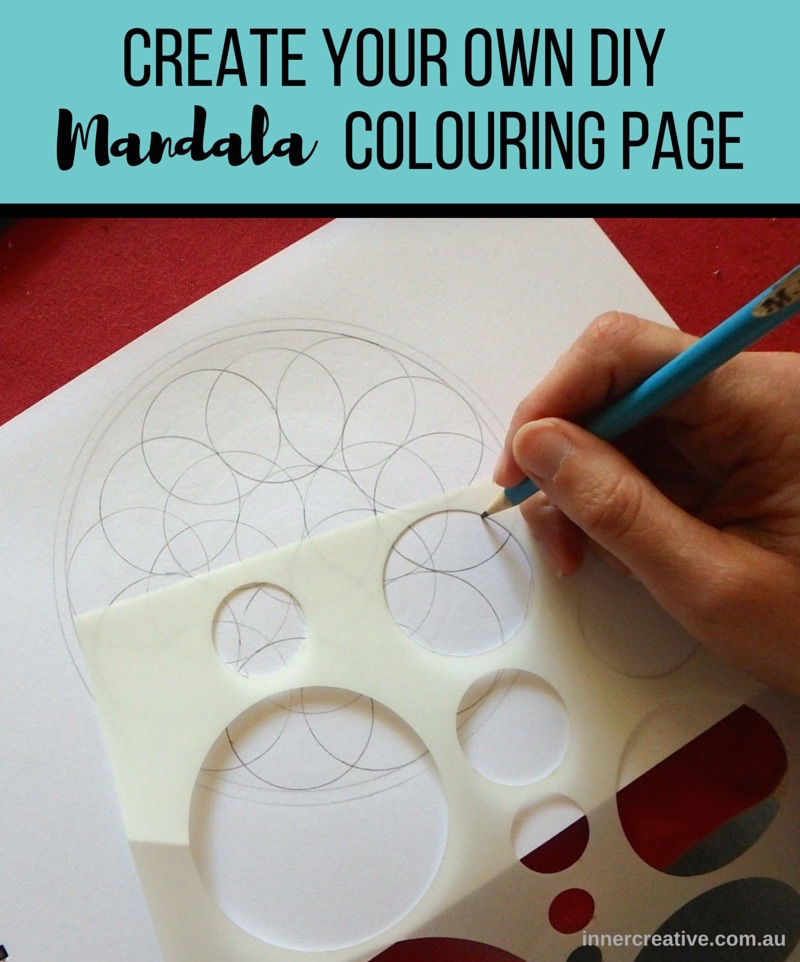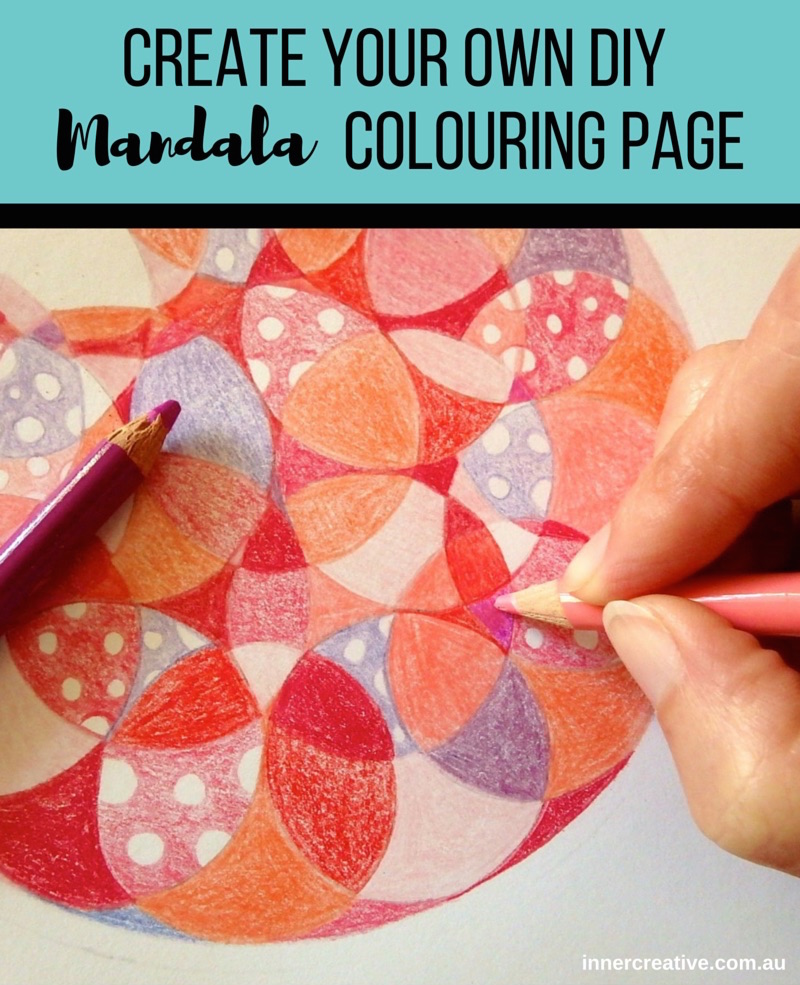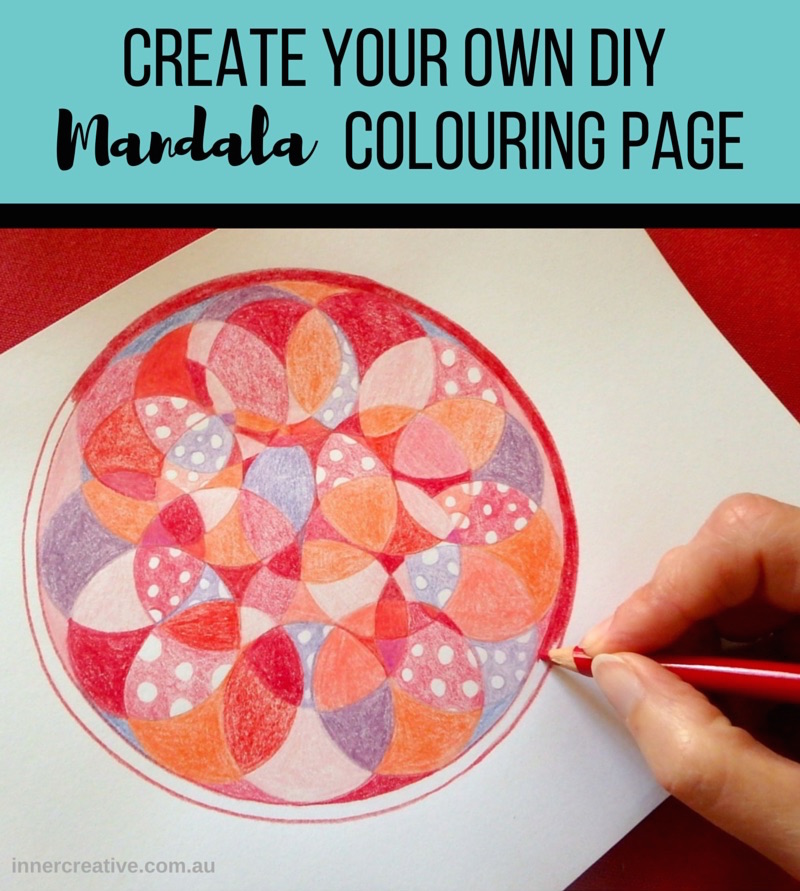This week’s Inspiration Mandala is for Mother’s Day.
In celebration of all of those Mums in our lives -whatever shape or guise they may be – and a big thank you for all of their love and support.
This post also shares how to create your own version of this mandala, so keep reading.
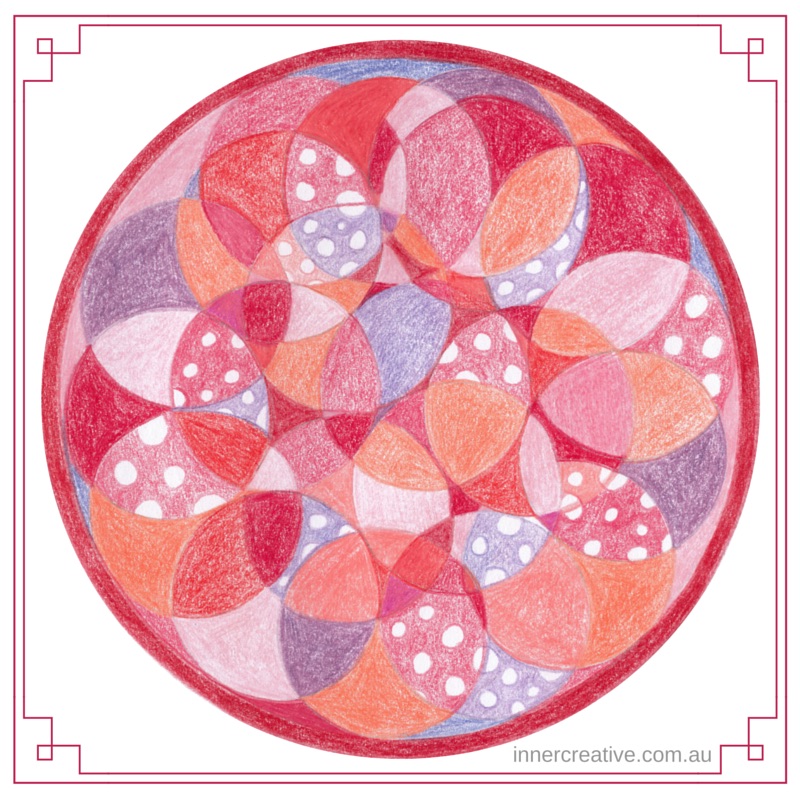
Thank you – for your love, your presence, your kindness, and gifts, we thank and celebrate you. The road has not always been easy nor straight. You may think that your love and efforts go unnoticed. But even those sleepy time kisses in the dark when no one’s watching are felt and appreciated. We love being loved by you.
Happy Mothers Day!
Now here are the instructions to create your own version of this Mothers Day Mandala.
Step 1 – Get your materials ready.
You’ll need some blank white paper, grey lead pencil, coloured pencils, an eraser and a circular shaped template. A compass is optional.

The paper can be any size or thickness (copy paper is fine); just as long as it’s blank. I like to keep my mandalas together, so I used a sketch pad or visual diary. It can be as basic or as fancy as you like :-).
The circular shape can be a template or any other circular shape that you can find in your home to trace around. It could be a cup or lid of any size. Just make sure that it won’t be too big to trace a number of them within your paper.
Step 2 – Trace circular shapes in overlapping patterns.
Pick one circular size in your circle template or one cup/lid to use in your design. Start in the middle of the page and then move outwards tracing various circles so they overlap. It doesn’t matter how much overlap there is. Let your imagination go wild! Experiment. Play. Have fun!
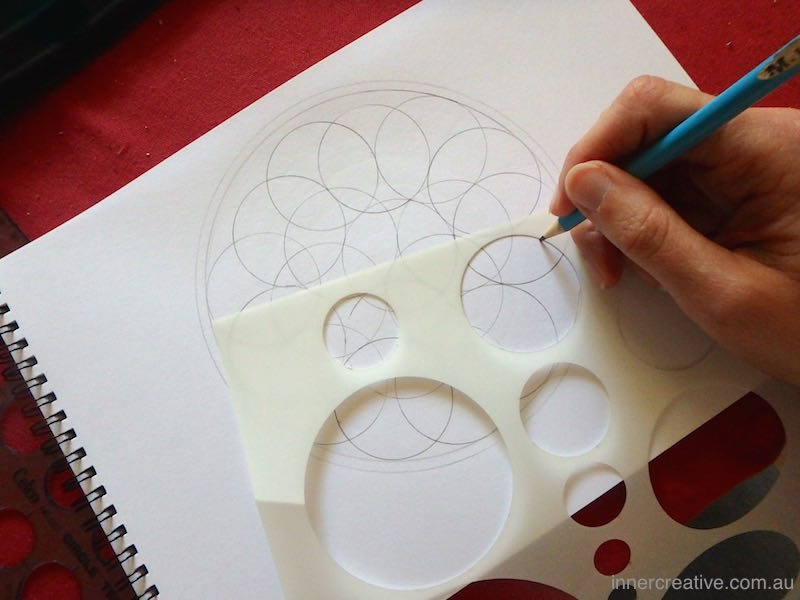 I also used a compass to draw two outer circles to create a border for the circles.
I also used a compass to draw two outer circles to create a border for the circles.
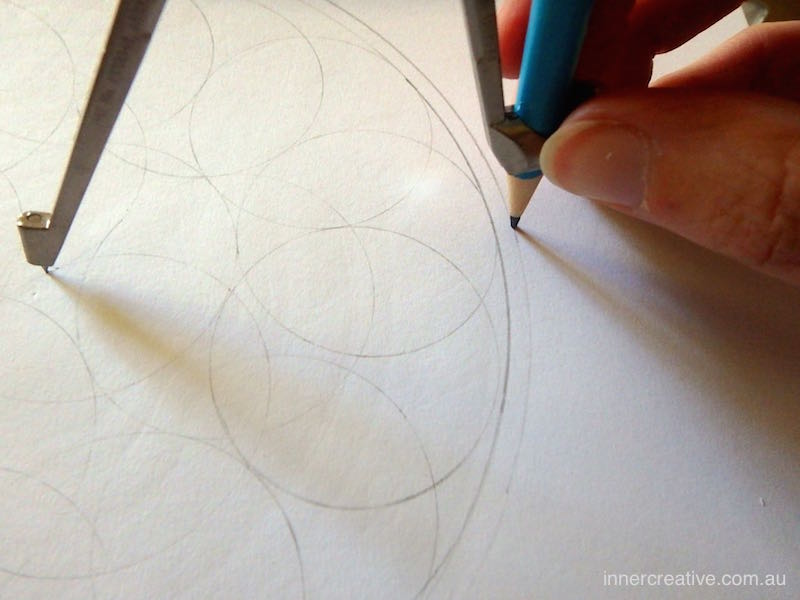
Step 3 – Lightly erase the grey lead pencil markings.
Make sure that you can still see the pencil marks, but that they are not so dark that they’ll detract from your design or show through light colours later on.
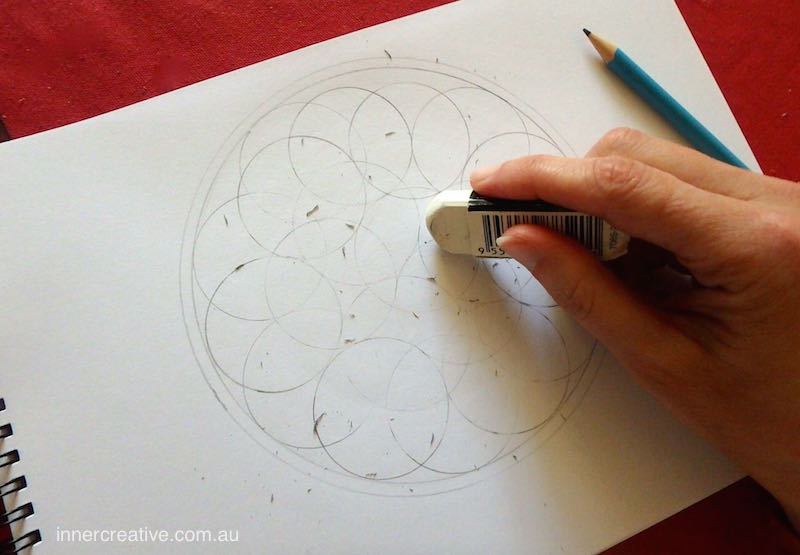
Once you’ve finished erasing you’ve created your very own mandala colouring page!
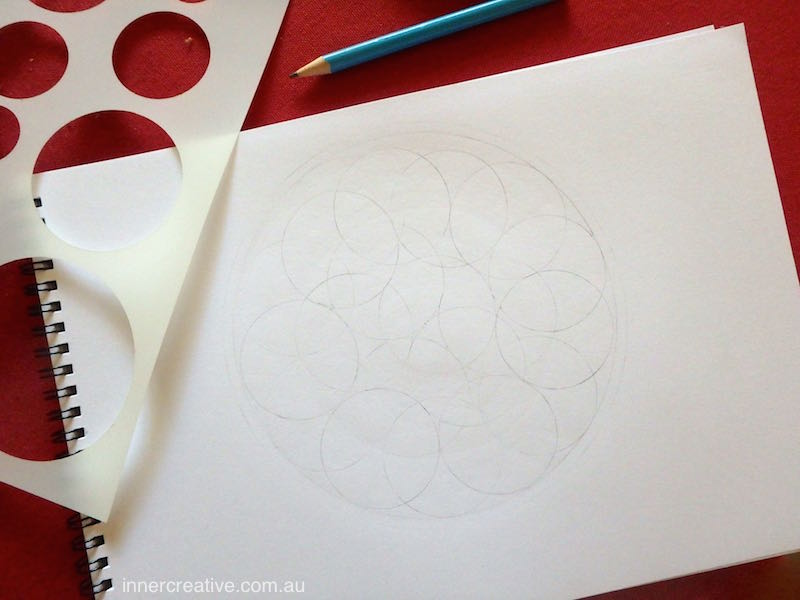
If you want to experiment with different colour combinations or patterns (like I did in my mandala play adventure), then photocopy or scan your black and white line drawing to create more copies of your colouring page for future colouring in. This way you’ll have a colouring page ready to go when you need that moment of down time. Although, now you know how simple it is to create your own colouring page, you can also just create a new one every time :-).
Step 4 – Colour in the central design
So now you’re free to colour your outline however you like :-).
I like to start by picking out random shapes and colouring them in with the same coloured pencil.

You can colour in random spaces and shapes with different coloured pencils to make an abstract pattern.
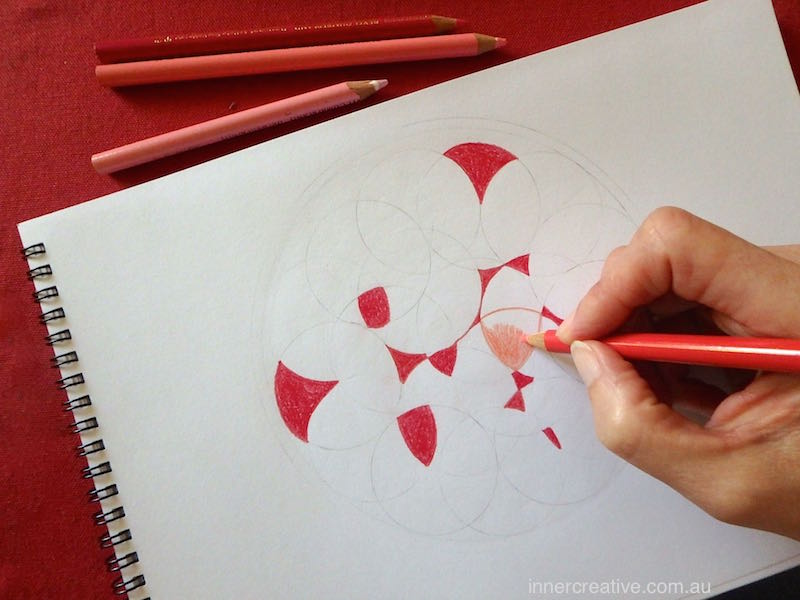 Or you can pick out hidden images.
Or you can pick out hidden images.
You can also create different patterns within the shape.
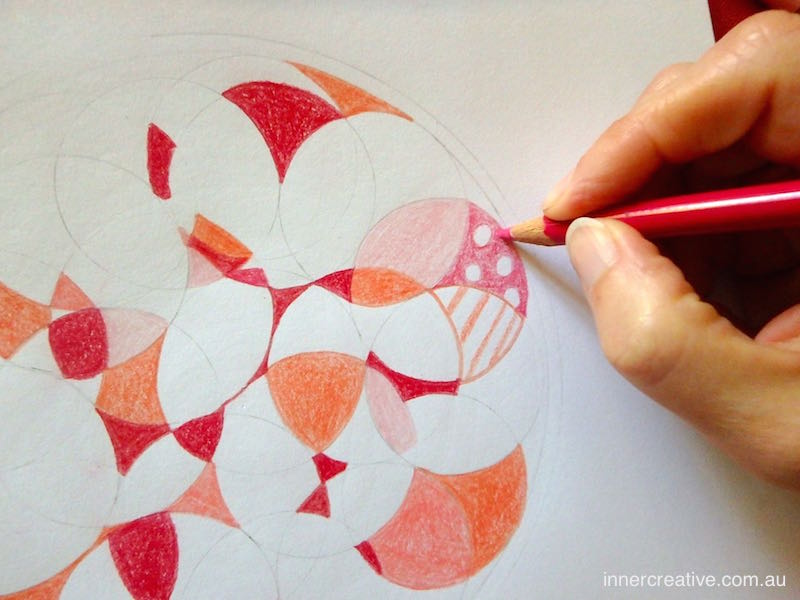
You can use shading, cross-hatching, blending or build up layers of colour.
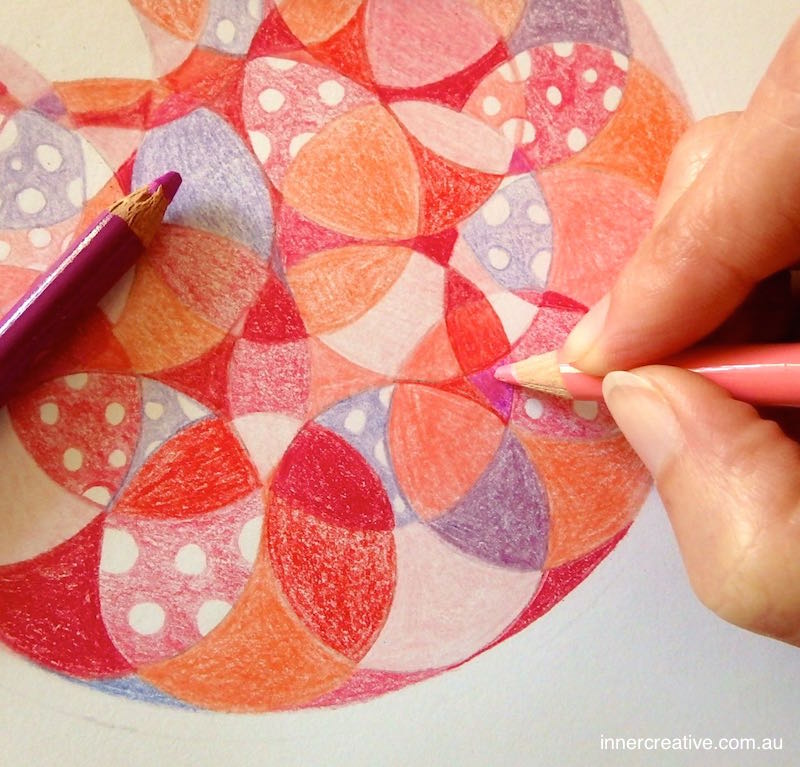
Step 5 – Complete the mandala by colouring in the outer ring.
Once you’ve finished colouring the inner sections of the circle, outline the two outer circles.
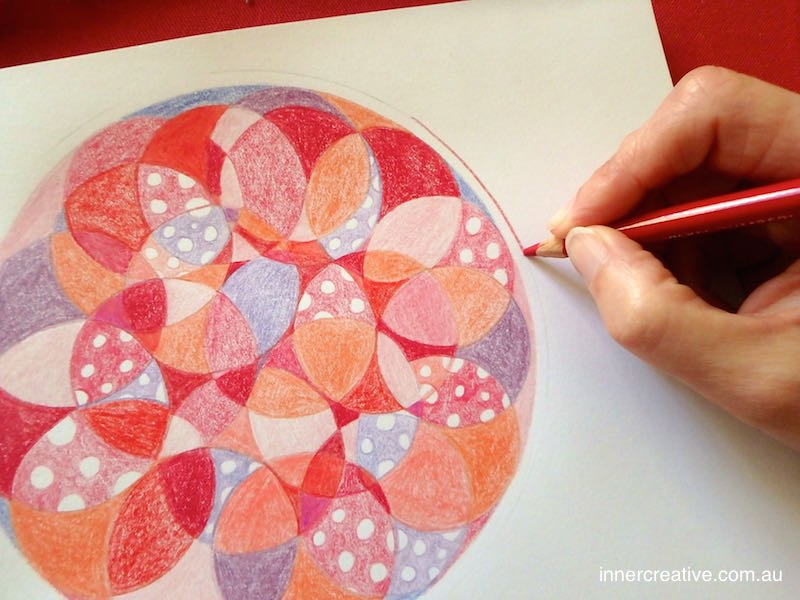
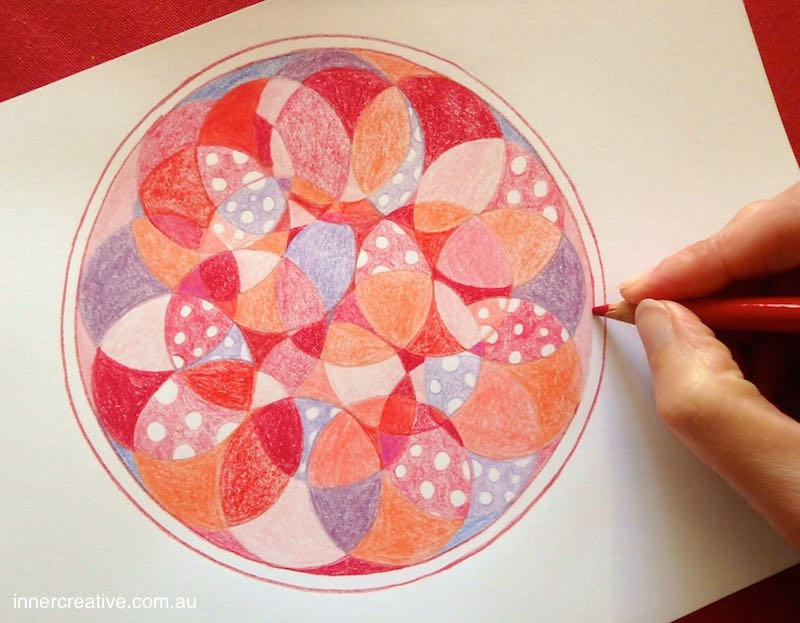
Finish off your mandala by colouring in that outer ring.
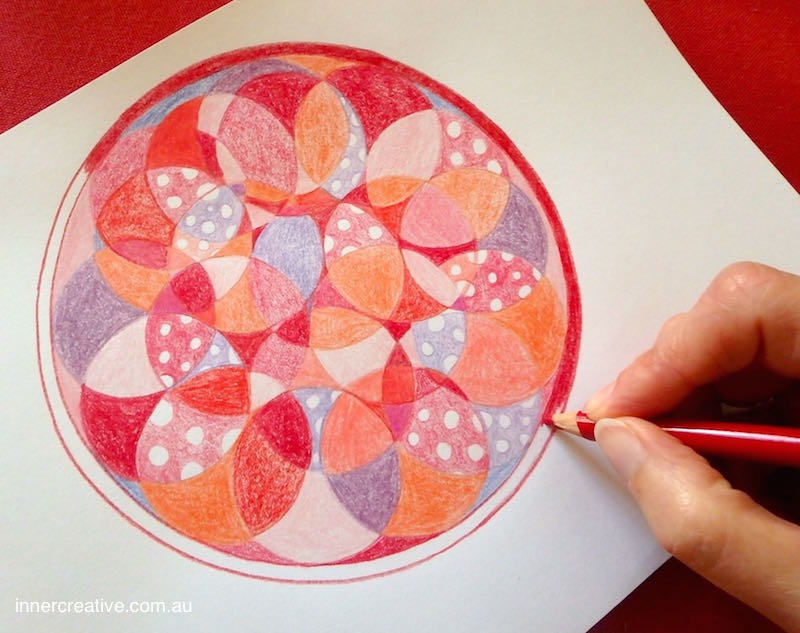
Here it is again finished!

I hope that this blog has inspired you to create your own mandala (and subsequent colouring page). Check out this DIY colouring page blog for more colouring inspiration. May it spark your imagination and unleash your inner creative. Happy creating!
If you are curious about Mandalas…
Mandalas are an ancient and sacred art form that involve creating patterns and shapes within a circle. Mandalas have been around for centuries. They have been used in various cultures and traditions (ranging from Tibetan Buddhist sand mandalas, Native American medicine wheels, and rose stained glass windows in Gothic cathedrals). Mandalas have also been used by psychiatrist Carl Jung with his patients after he discovered that drawing within a circle could be used as a tool for self-expression.
There is power when you create a mandala with an underlying intention. The act of sitting down and drawing a mandala also creates an opportunity to be still and totally absorbed in the task at hand. Drawing a mandala can be relaxing and form part of mindfulness practice. Its calming effect can ground and centre us. It can also provide us with a tool for self-expression and reflection.
Mandalas can also be used as part of a meditation practice. You use the mandala to settle your mind and provide a focus point for your eyes to rest on during your mediation. Whenever your mind gets distracted then bring your focus back to the mandala.
Looking for more Inner Creative mandala inspiration?
Then head over to the Mandala Inspirations Gallery (or see some other designs below), or the Mandala Play Adventure series (where I created a different mandala each day from the same colouring page for 30 days).
You can also get free mandala colouring pages, creativity tips, and other Inner Creative updates by signing up here for the Inner Creative mailing list.


